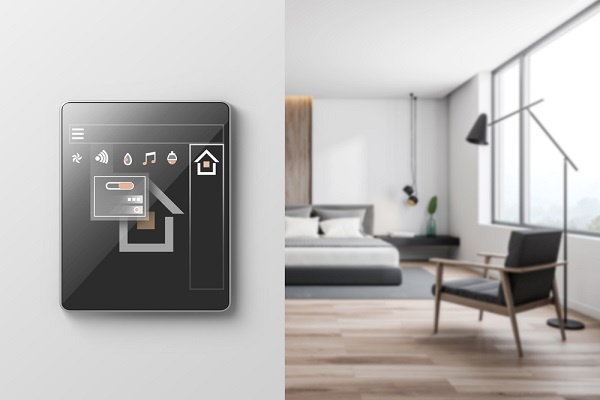Protecting Homeowners Against Smart Home Threats

By: Olivia Overman
Forty-two percent of U.S. households use at least one smart device in their home, according to InsiderIntelligence, which is more than any other country in the world. Revenue for this market is expected to reach $47 billion by 2025, according to Statista, signaling increasing adoption.
Since 2020, consumer reliance on smart devices increased significantly when more people began to work from home for the first time due to the coronavirus pandemic.
Many people look to smart devices to make their lives more convenient and provide peace of mind. Yet, one of the biggest fears about the use of smart devices is the potential for these devices to be hacked. There are many points where devices that are connected to the Internet of Things (IoT) can be accessed by cybercriminals, which leave a client’s privacy and security at risk.
In one example of such a vulnerability, a stranger hacked a Seattle couple’s Wi-Fi-enabled baby monitor, allowing the hacker to speak to the child and peer around the family’s home remotely, according to NBC News.
“Weak passwords and failure to recognize and avoid malicious emails are the unlocked windows of the cyber world,” says Jaclyn Kennelly, director, personal lines product development, Selective. “Both provide bad actors with easy access to computers and information.”
But while personal lines cyber insurance hasn’t traditionally been in demand, “it’s becoming increasingly relevant and common for consumers to seek out cyber insurance solutions,” says Nathanael Curtis, director of product solutions, Safeco Insurance.
As many as 85% of breaches involve the human element such as the misdelivery of information via email, vulnerabilities created through the use of weak passwords and outdated software, according to the Verizon 2021 Data Breach Investigations Report. “Agents play an extremely crucial role in educating consumers about cyber security and, ideally, providing them with tools and incentives to improve their cyber security,” says Timothy Zeilman, vice president for global cyber products, HSB.
“When communicating with consumers about cyber security, agents should focus on the basic measures, such as privacy settings, caution with personal information, keeping software and operating systems up to date, and backing up data,” Zeilman adds.
Clients are often unaware that they can add cyber to their homeowners insurance policy. “Cyber is an easy cross-sell opportunity in many cases, and it’s a good way for agents to really showcase their value as a trusted adviser,” Curtis says.
Sharing a few key tips can help clients “increase their cybersecurity readiness,” Kennelly says.
Here are five simple ways to educate homeowners to reduce exposure:
1) Computer hygiene. Keep operating systems up to date, use antivirus software and use secure internet connections.
2) Passwords. Change the default passwords on routers and smart home devices, consider using a password generator to create and manage strong random passwords, and don’t reuse passwords across sites.
3) Social media. Be selective with sharing information on social media and restrict privacy settings to avoid disclosing personal data to the public.
4) Scams. Be on the lookout for scams, such as phishing. Scammers do not limit their phishing expeditions to email, so be cautious with text messages, phone calls and social media.
5) Guard personal information. Be cautious when asked to share personal or financial information or if asked to share a website login authentication code.
Cyber risks relating to working from home have also increased exponentially since 2020. “Over the last two years, the COVID-19 pandemic fueled a fast transition to remote work, and organizations found themselves reliant on insecure technologies to facilitate this change,” says Shawn Ram, head of insurance, Coalition. “Many cyber policies only consider in-office work and ignore the new components of work that may have employees operating in a different city, state and even country.”
One area of concern lies in the fact that “some policies do not cover employees using their personal, non-company-owned devices,” Ram adds. “This is a significant gap given the new way of working as some policies attempt to limit coverage associated with ransomware—one of the greatest threats facing businesses today.”
Olivia Overman is IA content editor.










